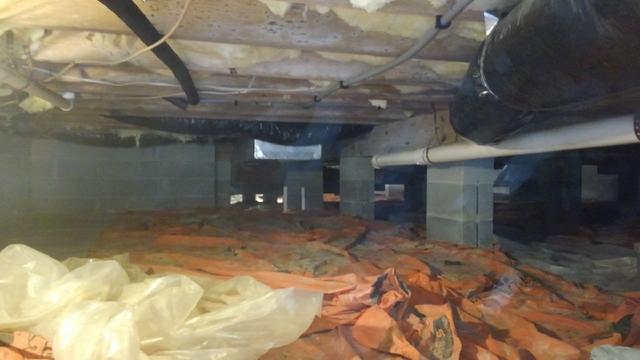
6 mil Vapor Barrier & Moldy Joists
The existing 6 mil vapor barrier is not sealed to the ground and disheveled allowing water vapor from the earth to rise into the crawl space. This contributes to the high relative humidity and with warm temperatures, which has resulted in the mold and mildew growth on the floor joists.
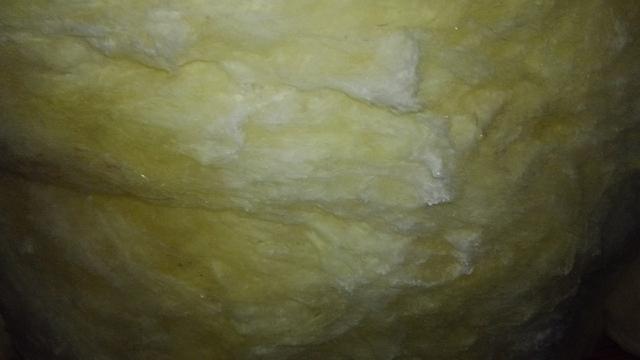
Wet Insulation
As moisture collects in the crawl space and the humidity increases, the fiberglass insulation between the joists acts like a sponge absorbing water. As moisture builds up in the material, it begins to damage the fibers, causing them to pull apart from one another. The added weight causes the insulation to sag, falling away from the floor and leaving the homeowners with cold floors.
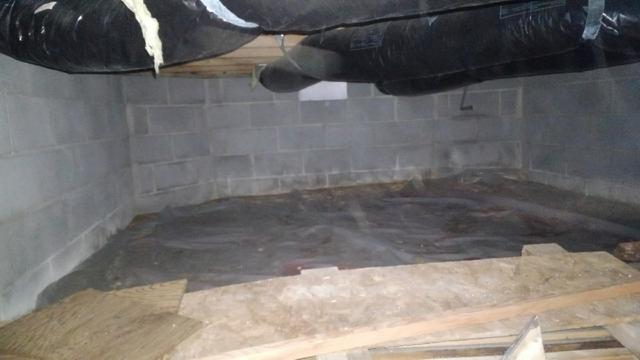
Sealed Crawl Space Vents
The vents in this crawl space are already sealed, but it is not enough to prevent moisture from building up in the crawl space. There are dozens of places for air carrying moisture to leak in, including the sill plate, rim and band, crawl space door, and any other penetrations in the foundation wall to the outside. Sealing the crawl space does not prevent moisture from building up, as the temperature in the crawl space changes, so does the relative humidity.
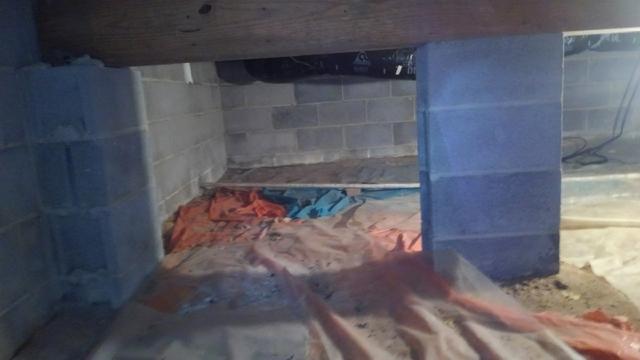
Efflorescence on Foundation Walls
Along the bottom of the foundation walls, you can see water stains and a white powdery substance called efflorescence. Efflorescence is the result of moisture moving through the walls and pulling minerals to its surface, as the moisture evaporates, we are left with the crystalized minerals on the blocks. This is an indicator that moisture is a concern in the crawl space. This moisture contributes to the overall relative humidity in the crawl space. High relative humidity in the crawl space, often leads to homeowners noticing high humidity in their living space.
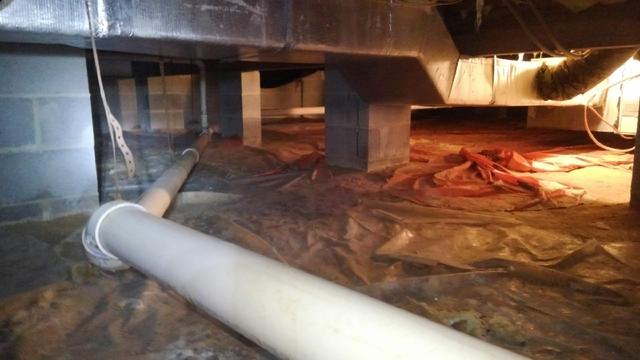
Ductwork in Crawl Space
Ductwork is leaky, especially at connections and vents. Leaky ducts suck the bad air, dust, and allergens, in from your crawl space and send it back into your home. In addition, the ductwork is subject to the temperatures and environment of your crawl space. Therefore, the duct lines, with little or no insulation are typically the same temperature as your crawl space. In the summer you could be sending 55-degree air through your ducts to cool your home down, but your ducts are 80-degrees, they are warming the air you're paying to cool and delivering warmer air to your home, making it harder to cool down. The reverse is true in the winter.
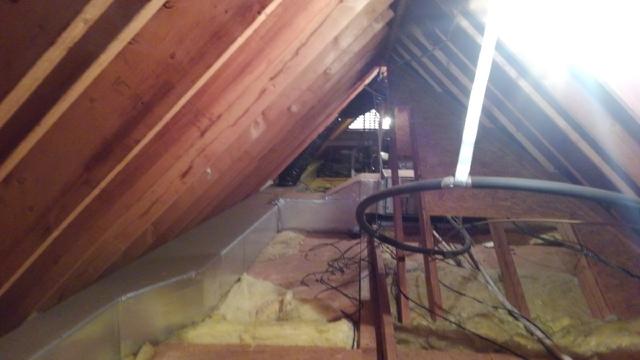
Ductwork in Attic
Much like a crawl space, ductwork in an attic is subject to the environment in the attic. The duct lines heat up to the same sweltering temperatures in the attic during summer months, which often reach over 100-degrees. We pump cold, 55-degree air through the duct lines that are heated up. Imagine trying to cool a room to 75-degrees with 75-degree air. It's going to take a long time!
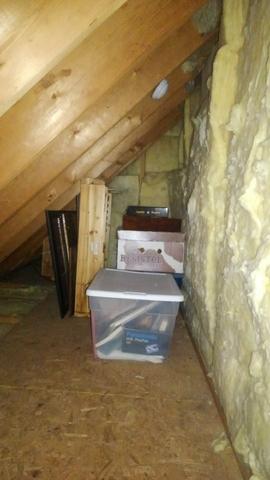
Knee Walls
These knee walls share a wall with a bedroom. The heat builds up in this attic space and radiates into the bedroom making it too hot in the summer and too cold in the winter. The floor of the knee wall space has the same effect on the room below. Properly air sealing and insulating these spaces can help keep the rooms they share walls with more comfortable for the homeowners and result in less energy loss.
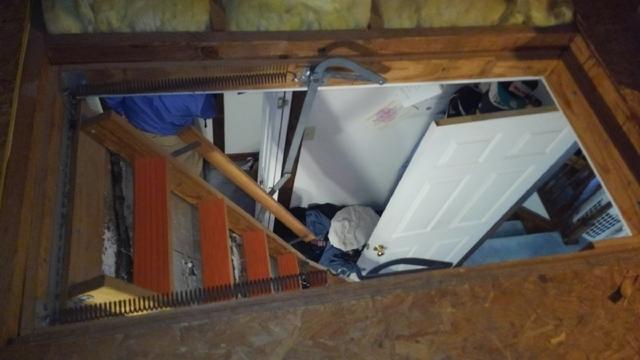
Attic Stair Access
An attic access is a huge hole that creates drafts and allows heat and cold to radiate down into the home below. They also allow conditioned air to be sucked into the unconditioned attic. Insulating and air sealing the attic access can mitigate the significant energy loss from pull downstairs and scuttle accesses.
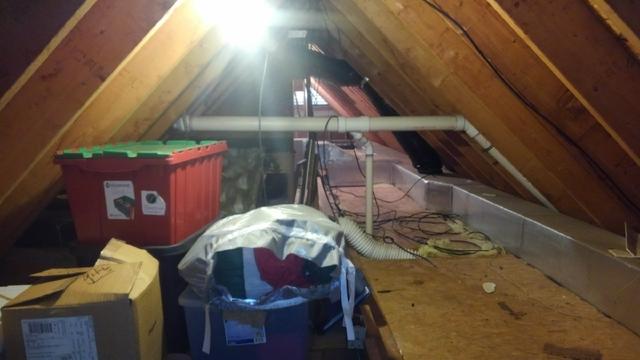
Attic Storage
Many homeowners use their attic space for storage and wanted to maintain that with their attic. To achieve this, we offered them the option of installing insulated storage decking allowing them to insulate from the attic floor, access any HVAC or utility lines, and have full use of their attic space for storage. Leaving them with more comfortable rooms below, lower energy bills, and not compromising the use of their attic space.
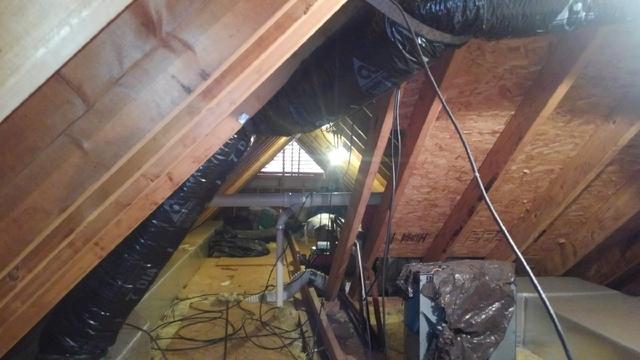
Too Little Insulation
The existing fiberglass insulation under the plywood in the attic doesn't offer a high enough R-value to prevent heat from radiating down into the rooms below. This is why the homeowners are experiencing a lot of conditioned air loss and rooms that are too hot or too cold.


